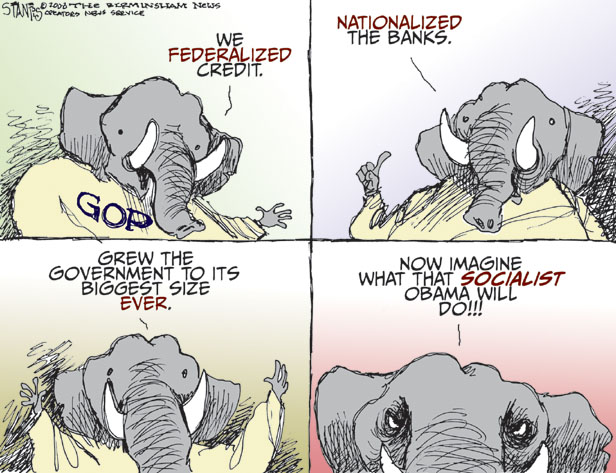11
Apr 12
It’s all so clear now…
How To Write Good
by Frank L. Visco
My several years in the word game have learnt me several rules:
- Avoid alliteration. Always.
- Prepositions are not words to end sentences with.
- Avoid cliches like the plague. (They’re old hat.)
- Employ the vernacular.
- Eschew ampersands & abbreviations, etc.
- Parenthetical remarks (however relevant) are unnecessary.
- It is wrong to ever split an infinitive.
- Contractions aren’t necessary.
- Foreign words and phrases are not apropos.
- One should never generalize.
- Eliminate quotations. As Ralph Waldo Emerson once said: “I hate quotations. Tell me what you know.”
- Comparisons are as bad as cliches.
- Don’t be redundant; don’t more use words than necessary; it’s highly superfluous.
- Profanity sucks.
- Be more or less specific.
- Understatement is always best.
- Exaggeration is a billion times worse than understatement.
- One-word sentences? Eliminate.
- Analogies in writing are like feathers on a snake.
- The passive voice is to be avoided.
- Go around the barn at high noon to avoid colloquialisms.
- Even if a mixed metaphor sings, it should be derailed.
- Who needs rhetorical questions?
29
Mar 12
I Remember the Art of Sentence Diagramming…
A Picture of Language
The curious art of diagramming sentences was invented 165 years ago by S.W. Clark, a schoolmaster in Homer, N.Y. [1] His book, published in 1847, was called “A Practical Grammar: In which Words, Phrases, and Sentences Are Classified According to Their Offices and Their Various Relations to One Another.” His goal was to simplify the teaching of English grammar. It was more than 300 pages long, contained information on such things as unipersonal verbs and “rhetorico-grammatical figures,” and provided a long section on Prosody, which he defined as “that part of the Science of Language which treats of utterance.”
It may have been unwieldy, but this formidable tome was also quite revolutionary: out of the general murk of its tiny print, incessant repetitions, maze of definitions and uplifting examples emerged the profoundly innovative, dazzlingly ingenious and rather whimsical idea of analyzing sentences by turning them into pictures. “A Practical Grammar” was a reaction against the way the subject had been taught in America since it began to be taught at all.
Before diagramming, grammar was taught by means of its drabber older sibling, parsing. Parsing is a venerable method for teaching inflected languages like Latin; the word itself is schoolboy slang derived from pars orationis, Latin for “a part of speech.” Sometime in the 18th century, teachers began to realize that practical skills were more useful to young people than classical languages, and that the ability to speak English didn’t necessarily mean that a student spoke it well, wrote it correctly or understood its structure. To teach it, they borrowed the concept of parsing from the classical tradition in which they themselves had been trained.
Put simply, parsing requires the student to break down a sentence into its component words, classifying each in terms of its part of speech, as well as its tense, number and function in the sentence.
22
Mar 12
The Sad Truth…

Fairgoers cheer for Sarah Palin while she appears on the Sean Hannity Show at the Iowa State Fair, August 12, 2011
Age of Ignorance
Charles Simic
Widespread ignorance bordering on idiocy is our new national goal. It’s no use pretending otherwise and telling us, as Thomas Friedman did in the Times a few days ago, that educated people are the nation’s most valuable resources. Sure, they are, but do we still want them? It doesn’t look to me as if we do. The ideal citizen of a politically corrupt state, such as the one we now have, is a gullible dolt unable to tell truth from bullshit.
An educated, well-informed population, the kind that a functioning democracy requires, would be difficult to lie to, and could not be led by the nose by the various vested interests running amok in this country. Most of our politicians and their political advisers and lobbyists would find themselves unemployed, and so would the gasbags who pass themselves off as our opinion makers. Luckily for them, nothing so catastrophic, even though perfectly well-deserved and widely-welcome, has a remote chance of occurring any time soon. For starters, there’s more money to be made from the ignorant than the enlightened, and deceiving Americans is one of the few growing home industries we still have in this country. A truly educated populace would be bad, both for politicians and for business.
It took years of indifference and stupidity to make us as ignorant as we are today. Anyone who has taught college over the last forty years, as I have, can tell you how much less students coming out of high school know every year. At first it was shocking, but it no longer surprises any college instructor that the nice and eager young people enrolled in your classes have no ability to grasp most of the material being taught. Teaching American literature, as I have been doing, has become harder and harder in recent years, since the students read little literature before coming to college and often lack the most basic historical information about the period in which the novel or the poem was written, including what important ideas and issues occupied thinking people at the time.
03
Mar 12
NY Strip Steak & Brussels Sprouts – Project Flickr: 8/52 – Patterns

NY Strip Steak & Brussels Sprouts – Project Flickr: 8/52 – Patterns, originally uploaded by James Milstid, aka PapaJames.
Hot off my grill! The steak is nicely patterned with criss-cross grill marks and perfectly rare.
I also grilled the Brussels Sprouts on skewers and tossed them in an onion-bacon marmalade before serving. The marmalade will make a Brussels Sprouts hater into a believer!
The recipe can be seen here: Patio Daddio BBQ
29
Feb 12
Dimples – Project Flickr: 9/52 Patterns
Dimples on a golf ball serve to actually create less drag as it flies through the air, giving more distance. Most golf balls today have 250-450 dimples. There are no regulations about how many, the pattern, or even the depth and shape of the dimples.
Golf balls didn’t always have dimples. It was discovered by early golfers that their drives went further after they got nicked and scored during regular play.
Patented in 1905, it wasn’t until 1930 that dimpled golf balls became de rigueur in the game.






